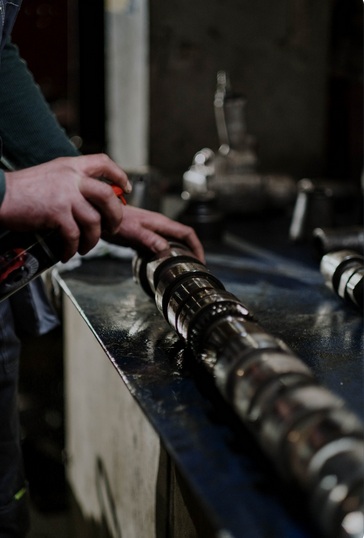Degreasing Industrial Surfaces: How Nonwoven Wipes Support Production Processes
Degreasing surfaces in industry is a crucial step in many production processes, as it impacts the quality of the final products and the efficiency of machinery. High-quality surface cleanliness ensures precision during processing and improves operational safety. In this context, nonwoven wipes are indispensable tools in the process of removing grease, lubricants, and other oily substances that can negatively affect the functionality of machines or the quality of the products being manufactured.
Why is Degreasing So Important?
Degreasing surfaces in industry is vital, especially in sectors such as automotive, chemical, electronics, and food industries. Greases, oils, lubricants, and other substances can accumulate on work surfaces, machines, and products, leading to contamination. Failing to apply proper degreasing methods can result in equipment damage, reduced production efficiency, and deteriorating product quality.
Choosing the Right Degreasing Agent
The key to effective degreasing is choosing the right cleaning agents that are both effective and safe for the surfaces they are applied to. The choice of cleaning agent should depend on the type of grease or oil to be removed. Additionally, attention should be paid to the material of the surface being cleaned. Some chemicals may be too aggressive and could damage more delicate materials, so they should be used with caution.
The Role of Nonwoven Wipes
Nonwoven wipes are the ideal solution for removing grease and other contaminants in industrial settings. They are characterized by high absorbency, resistance to solvents, and high mechanical durability. Depending on the specific applications, various types of nonwoven wipes are available that ensure precise and effective cleaning.
Nonwoven wipes are extremely effective in removing grease, lubricants, and oils from both metal and other material surfaces. Moreover, they are dust-free, meaning they leave no residue on the cleaned surfaces, which is crucial in precise production processes, such as electronic component assembly.
What Characteristics Should a Degreasing Wipe Have?
Choosing the right wipe is key to ensuring that the degreasing process is effective and safe. Properties to consider include:
- Solvent Resistance – Nonwoven wipes for degreasing must be resistant to chemicals and solvents, allowing for the effective removal of grease and lubricants without degrading the material.
- Absorbency – High absorbency ensures the wipe can efficiently soak up greasy substances, minimizing their spread on the cleaned surface.
- Non-abrasiveness – In industries like electronics and food, it is essential that wipes do not damage the surfaces they are used on. The nonwoven material must not cause scratches, which is particularly important when cleaning delicate electronic components.
- Dust-Free – Air cleanliness and minimizing dust are important, especially in industries such as food, pharmaceuticals, and electronics. The nonwoven material used for degreasing should be free from particles that could contaminate production.
- Durability – In industrial processes where cleaning is frequent, wipes need to be durable enough to withstand intensive use. High-quality materials ensure longer-lasting performance and effectiveness.
Where to Use Nonwoven Wipes for Degreasing?
Nonwoven wipes for degreasing surfaces have broad applications in various industrial sectors:
- Automotive Industry – For degreasing engines, mechanical parts, and car bodies.
- Chemical Industry – For cleaning machines and equipment used in the production of chemicals.
- Electronics Industry – For degreasing electronic components, preventing damage and ensuring reliable performance.
- Food Industry – In food processing plants, where the highest hygiene standards are required, and degreased machines need to be cleaned with accuracy and precision.
- Aerospace and Pharmaceutical Industries – Where surface cleanliness is crucial for the quality of the final products.
Conclusion
Degreasing surfaces in industry using the right nonwoven wipes is an essential element of maintaining production quality, machinery efficiency, and operational safety. Choosing high-quality materials, such as nonwoven wipes that are solvent-resistant, durable, absorbent, and dust-free, guarantees the success of this process. Proper surface preparation, selecting the appropriate degreasing agents, and regular cleaning help maintain high standards of quality and safety in every manufacturing facility.


Contact
Products
Information
© 2025 Avatex – professional nonwoven and industrial wipes

